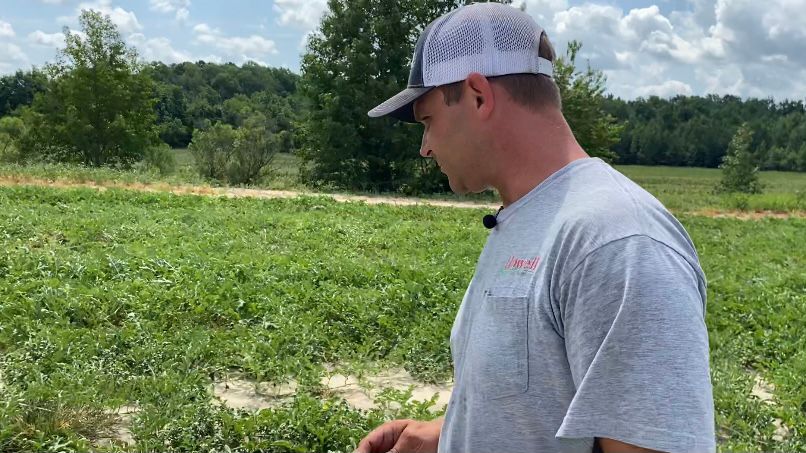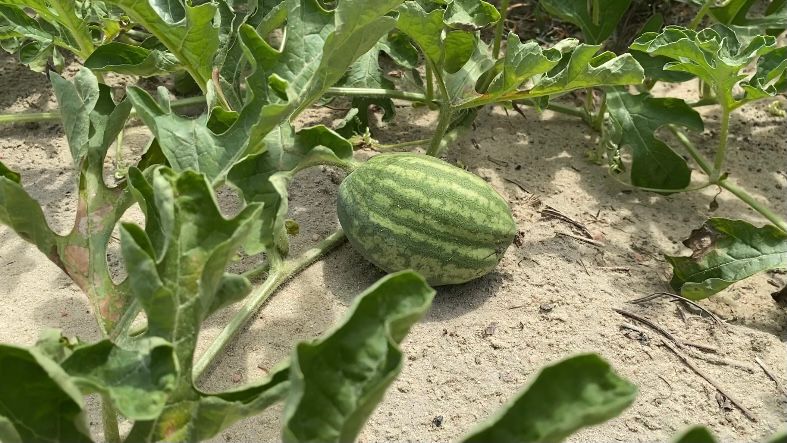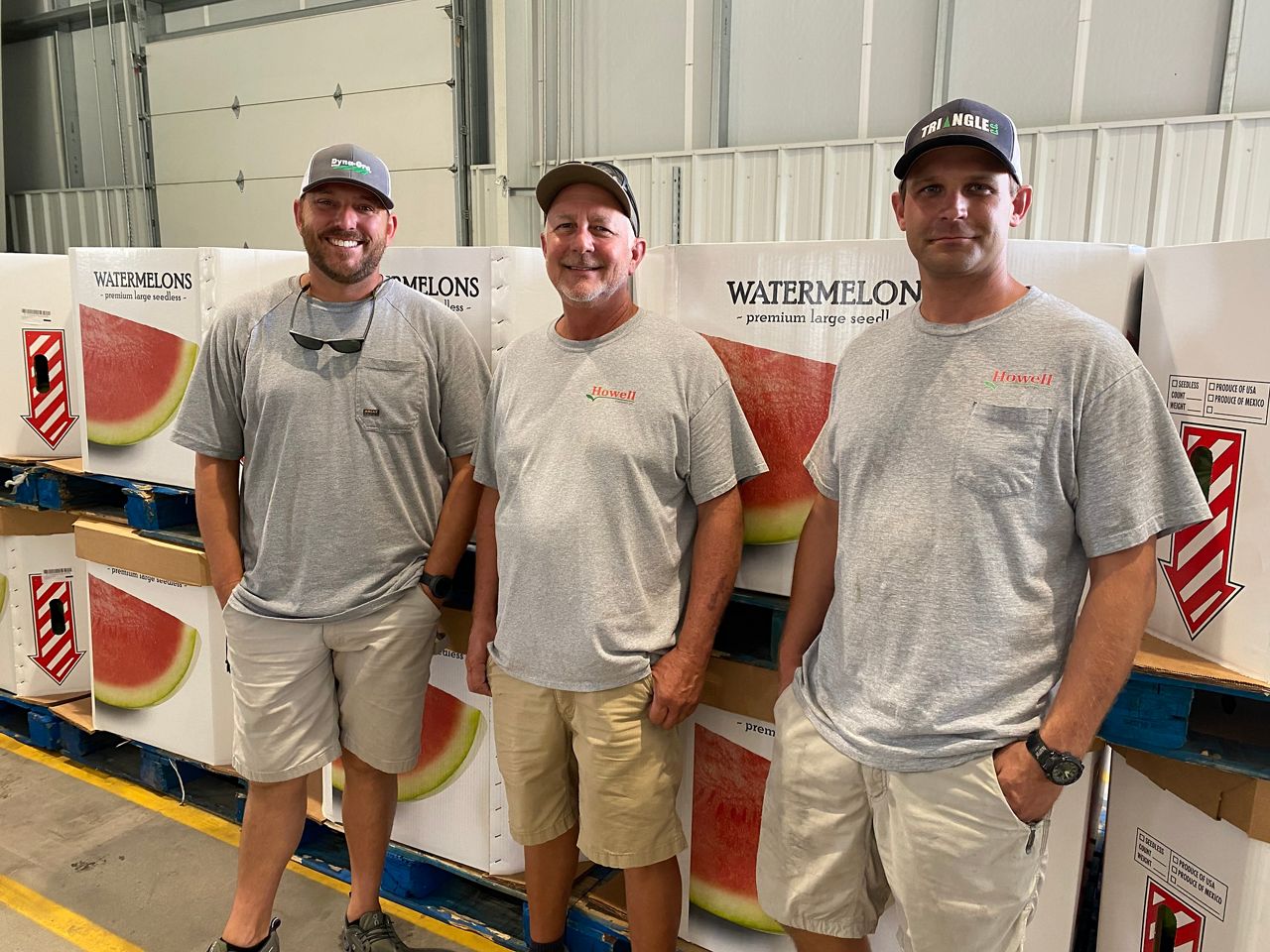GOLDSBORO, N.C. — Watermelon season kicks off in April down in Florida and slowly makes its way up the sandy soil of the East Coast, but thanks to widespread high temperatures and low rainfall, farmers say they're struggling this year.
The State Farmer's Market on Thursday celebrated summertime with a visit from watermelon royalty, live music and face painting. They even held a giant watermelon contest, but watermelons – especially giant ones – are in short supply this year.

“There's a whole lot more demand this year,” Danny Beasley with Howell Farming Co. said. “Supply has been down. We've been out of it for about 10 days, and it's the same for every grower in this area. It's just been a tough year.”
The sandy soil of North Carolina is perfect for watermelons, which don't like to sit in water.
Garrett Howell, the farm manager with Howell Farming, said the ideal weather for watermelons is about an inch of rainfall once a week followed by dry, sunny weather for a few days.
“If water stands in the field, you'll have disease pressure really bad, so you definitely don't want that,” Howell said.
Yet as much as they don't like getting their feet wet, watermelons can't survive a drought, either.
“Lack of rain in June really hurt us,” Beasley said. “They're starting to turn around, just taking a little bit longer to get ready.”

Finding watermelons that are truly ready to be picked is like looking for a needle in a haystack this season. The vines didn't grow as much as they typically do, leaving bare sandy patches throughout the fields and letting the scorching sun ripen the exposed fruit before it had a chance to grow.
“Every single morning, I'm trying to find something to be picking,” Howell said. “They say it takes 30 days to get from this flower, once it gets pollinated, to get a harvestable watermelon.”
North Carolina ranks eighth in the nation for watermelon production and averages more than 180 million pounds of watermelon a year. Howell and Beasley are looking for a late comeback crop now that some late rains are bringing new life to the vines. If all goes according to plan, they'll be picking until early September.

“We got about 20 people here, we can do about three buses an hour, so that's about an 18-wheeler-and-a-half per hour,” Beasley said. “On an average good day, we can do 20 18-wheelers ... we don't want to overshoot and have trucks here with no product.”
Howell Farming grows three varieties, each of which produces a different shade of green on the rind.
One of the biggest misconceptions about watermelon is the darker the color, the sweeter the fruit. Beasley said 90% of their crop is what's called a white watermelon and in this case, the whiter the stripes on the rind are, the more ripe it is.
You can look for their watermelons in stores under the label Southeastern Growers Association.



